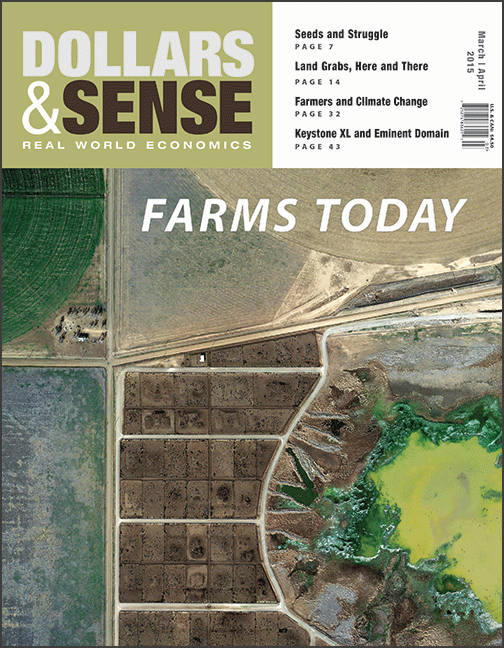Health Insurance for 20 Million is at Risk
If Congress fails to renew the ACA enhanced benefits, millions will be unable to access the health care they need.

Our March/April issue, a collaboration with Farm Aid on the theme of Farms Today, is finished--we're sending it to the printers today and to e-subscribers tomorrow. Here is the p. 2 editorial note:
In his comment for this special issue, a collaboration between Dollars & Sense and Farm Aid, Willie Nelson argues that we need a new and broader definition of wealth—from what can be extracted from producers and nature to what sustains producers, their families, their communities, and the natural world. “As caretakers of our soil and water,” he writes, “this has been and always should be the essential role of the family farmer.”
The economic future of family farmers in the United States is at the core of Farm Aid’s work. But this fundamental opposition—between extraction and sustenance, between depletion and renewal—spans a much broader spectrum of issues, in the United States and around the globe.
Lukas Ross and Timothy A. Wise tell two parallel stories of “land grabs” today. Wise describes an abortive land grab—financed by Brazilian and Japanese investors—in Mozambique. As he points out, the land grab failed not because the land was not suitable for agriculture, but because it was—and the people that were already farming it mobilized to fight off the land grabbers. Ross, meanwhile, focuses on the United States, and big financial institutions acquiring large swaths of land.
Sasha Breger Bush turns our attention to the unequal relationship between farmers and the companies that dominate the food industry. Again, we have a dual focus on the United States and developing countries. Breger Bush describes how, in the United States, poultry farmers find themselves under the thumb of giant “integrators” like Perdue, Tyson, and Pilgrim’s Pride. In developing countries where coffee is widely grown, farmers face a similar relationship with coffee processors. In both cases, there is a fundamental relationship of “unequal exchange.”
Writer and photographer David Bacon provides a vivid picture—in words and images—of the conditions and struggles of migrant farm workers in the United States today. Bacon gives an overview of this migrant work force—most of them indigenous people from Mexico, shuttling between the farms of California and Washington State—as a prelude to the poignant first-hand testimony of migrant farmworker and organizer Rosario Ventura. Bacon’s powerful black-and-white photos provide an apt accompaniment.
University of Maine researchers Stephanie Welcomer, Mark Haggerty, and John Jemison take us inside Maine farming, and farmers’ varied reactions to the climate change. Almost all farmers, they note, are making adaptations to deal with new and increasingly volatile weather conditions. Few, however, speak directly about global climate change, much less the need for climate policy to avert more severe change in the future. Welcomer, Haggerty, and Jemison suggest that, sooner rather than later, farmers must confront this reality more directly.
This is an unflinching look at the difficult realities confronting farmers and farm workers today. However, the picture is far from hopeless.
Wise points to Mozambique farmers’ successful fight-back against the land grabbers. Bacon and Ventura describe migrant farm workers’ organizing. Mark Paul and Emily Stephens describe the growing phenomenon of community supported agriculture, re-establishing a direct relationship between farmers and eaters. Elizabeth Fraser and Anuradha Mittal explain how the world seed market is dominated by a handful of corporations, but also how national governments are pushing back and the global movement against the seed giants is growing. Finally, John Ikerd explains how today’s practices of “industrial agriculture” have failed. Ikerd ends on a hopeful note—how “a new kind of agriculture is emerging to meet the ecological, social, and economic challenges” we face today. Photographer Mishka Henner’s beautiful yet disturbing satellite images of industrial feedlots, accompanying this article and on the issue’s cover, capture a contaminated landscape barely recognizable as agriculture.
To be sure, the necessary transformations will not be easy. When we think about agriculture—as when we think about any aspect of society—we need to understand that power is real, and that the few are, indeed, very powerful. But the many are not powerless.